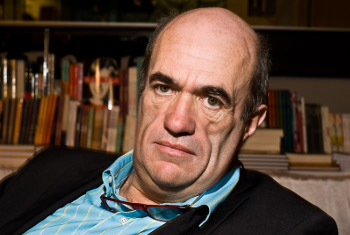It has been 20 years and then some, that the architectural ensemble occupied today by the Centre de Cultura Contemporània de Barcelona (CCCB) was the Casa Provincial de Caritat (Provincial Almshouse), a former charity establishment that functioned as a hospice, created in 1802, and that continued as such until the year 1957. This means that 20 years ago and then some, the walls that surround us today were the scenario for the learning of diverse trades that provided a vulnerable population with skills so that they could produce, create and be capable of earning an independent living.
Since the CCCB first opened its doors with its contemporary and cultural view of the city, it has felt a responsibility to continue offering a space that is accessible to everyone and that offers the possibility of learning through a cultural experience.
The following form part of the social and educational programme of cultural facilities addressing the social sector: Apropa Cultura, which was recently winner of one of the Solidarity Prizes 2014 awarded by the ONCE Foundation in Catalonia. Specifically in the category of public administrations, for its effort of coordination in a programme of these characteristics that promotes the inclusion of all citizens, normalisation, personal autonomy, and accessibility. The CCCB is in this programme offering visits to exhibitions and urban itineraries, as well as visits to the Casa Provincial de la Caritat.
We have become involved in the European project Open All Areas with the museums of the articketBCN group, Audiences Europe Network and six other European organisations with the help of the European Union. A project involving the exchange of experiences based on the organisation by each partner of a day’s workshop with sessions presenting cases from each city. In Barcelona the workshop was held in November 2013, with the presentation of 11 different experiences in all spheres of culture, and with the participation of 110 people, 35 of them from other European countries.
We are running the special Alzheimer Programme for patients and families who want to share special moments of meeting with memories. In the face of the forecasts that state that by 2050, some 115 million people worldwide will be suffering Alzheimer, how should we as cultural institutions react? What can we contribute? A Soy Cámara programme, broadcast by TVE 2 in 2012 attempted to address this issue and to assess the current state of affairs. In the next academic year, the CCCB will be offering Museums and Alzheimer Sessions.
The growing awareness regarding the functional diversity and cognitive richness of each person, means that many large and small cultural facilities are looking, listening and showing awareness of this population. One of the initiatives that demonstrate this is the Community practice blog on Museums and Accessibility which we have created jointly between the CCCB, Museu Marítim, MACBA, Museu Nacional d’Art de Catalunya, Fundació Joan Miró, Museu Picasso de Barcelona, Fundació Tàpies, Museus de Sant Cugat and Oficina de Patrimoni de la Diputació de Barcelona; a working group with whom we meet regularly in order to debate and be active with regard to this audience.
We continue offering experiences that allow access to the best cultural programmes.











